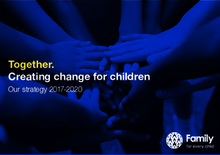Displaying 171 - 180 of 461
This article reviews the literature on the factors associated with mothers who use substances losing care of their children.
This brief brings together the critical mass of evidence emerging from recent rigorous impact evaluations of government-run cash transfer programmes in seven countries in sub-Saharan Africa.
This briefing highlights how prohibition of all corporal punishment of children in Africa is an essential step towards fulfilling the 2030 Agenda for Sustainable Development - particularly target 16.2 to end all violence against children, and targets related to health, well-being and quality education - and Africa’s Agenda for Children 2040: Fostering an Africa Fit for Children.
This working paper assesses the performance of local and community-based structures in Kenya and Zambia in delivering the government social protection systems that they are tasked to support.
This document describes and provides guidelines for countries to implement the Household Vulnerability Prioritization Tool (HVPT), a tool developed in Uganda to identify and prioritize vulnerable households for enrollment in OVC programming.
This article from the Special Issue on Kinship Care of the Child Welfare Journal explores the Family Connections Discretionary Grant Program in the US.
This Resolution Booklet includes the motions and resolution adopted by the European Youth Parliament at its 2017 meeting.
This paper reviews evidence and develops a framework to understand linkages between non-contributory social safety nets (SSNs) and the experience of childhood emotional, physical and sexual violence in low- and middle-income countries.
This document describes the 2017-2020 strategy of Family For Every Child. The Strategy paper highlights the mission and vision of Family For Every Child, provides examples of past work and key lessons, and describes its approach and goals to create change toward better care for children.
This case study describes the process, methods and results of the approach promoted by World Education’s Bantwana Initiative under two USAID/PEPFAR-funded consortium projects in Uganda: SUNRISE-OVC and STAR-EC.








